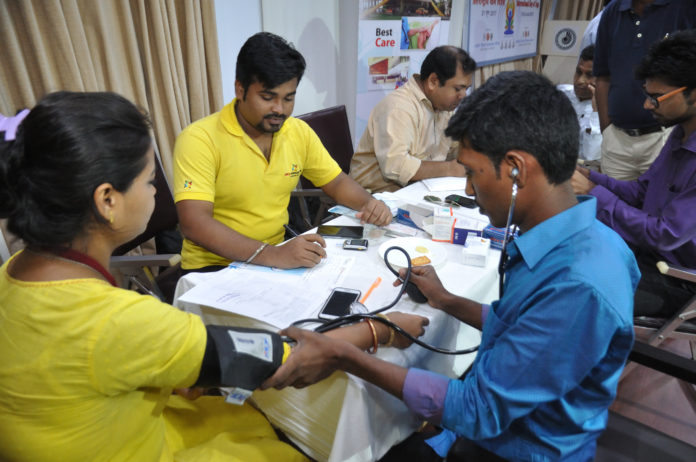Study shows despite high incidence of hypertension in India, only 45% of those with high blood pressure know it
It is a well acknowledged fact that the incidence of hypertension in Indians is very high. What is perhaps more scary is that awareness about the disease is very low and many people suffering from it do not even know that they have high blood pressure.
In a first large –scale population –based study of hypertension care in India published in PLOS Medicine, the findings have shown that the Hypertension prevalence in India is high, but the proportion of adults with hypertension who are aware of their diagnosis, are treated and achieve control is low. The study was carried out by researchers at the Public Health Foundation of India (PHFI), Harvard T.H. Chan School of Public Health, Heidelberg Institute of Global Health, University of Birmingham and University of Gottingen,
Researchers used National Health and Family Survey (NFHS-4, 2015-16) data of 731864 individuals aged 15-49 years, which covered each district of 29 states and 7 union territories of India.
Only 5.3% of hypertensive men and 10.9% of hypertensive women aged 15-49 years have their blood pressure under control (i.e., they are taking medications and have a normal blood pressure)
Dr Dorairaj Prabhakaran, Vice President, Research and Policy, at PHFI and one of the authors of the study said “Detection of hypertension is straightforward, treatments are simple yet effective, and hence hypertension can be easily controlled. Control of hypertension prevents future stroke, heart attacks and deaths. However, it is an unfortunate paradox that India does not perform well in any of the measures of detection, treatment and control. I believe the new National Health Mission through the health and wellness clinics has the potential to address the issue.”
Undetected hypertension can lead to many complication sin later life including eye and kidney problems. The best known and potentially most lethal effect though is on the heart.
Dr. Lindsay Jaacks, faculty at the Harvard T.H. Chan School of Public Health and visiting faculty at PHFI, added, “This is not just an assessment of health systems. We need demand-side interventions to raise awareness in India that hypertension is relatively easy and cheap to treat, and that keeping it under control can have huge benefits in terms of preventing heart attacks and stroke.”
Purpose of the Study:
– Hypertension is a major risk factor for cardiovascular disease, which is a leading cause of death in India
– There are no population – based large scale study from India on the steps for screening to successful control of hypertension at which people are lost from care
Study Findings:
– This is the first large-scale nationally representative study of hypertension care in India.
– This nationally representative study suggests 3 out of 4 individuals with hypertension had ever their blood pressure measured
– Less than half of individuals (45%) had been diagnosed
– Less than 1 in 7 (13%) reported currently taking hypertensive medication
– Less than 1 in 10 (8%) had their blood pressure under control.
– The study also found adults living in rural areas, men, and those who were poorer, were even less likely to receive the care they need.
– Only 5.3% of hypertensive men and 10.9% of hypertensive women aged 15-49 years have their blood pressure under control (i.e., they are taking medications and have a normal blood pressure).
– There is huge state-level variation in hypertension screening. Screening of hypertensive individuals was lowest in Madhya Pradesh (61.3%) and highest in Haryana (93.5%).
– More than half of Indians aged 15-49 years with hypertension are not aware of their hypertension status. Awareness level was lowest in Chhattisgarh (22.1%) and highest in Puducherry (80.5%).
– 27 major states/union territories have blood pressure control rates below 10%. Daman and Diu was the highest, but still only 1 in 5 adults there are under control.
Study Implications for India:
– Urgent need of improvements in hypertension awareness, care and control for all Indians specially amongst the most productive years (15-49 years)
– Improve hypertension awareness and control amongst households with lower levels of wealth and those living in rural areas. A further important target group is men
– India forms 18% of the world’s population and is expected to be the most populous country by 2025, India’s ability to improve hypertension care will have decisive impact on the world’s ability to achieve the international NCD goals, including SDG and the WHO’s Global Action Plan for the Prevention and Control of NCDs.


